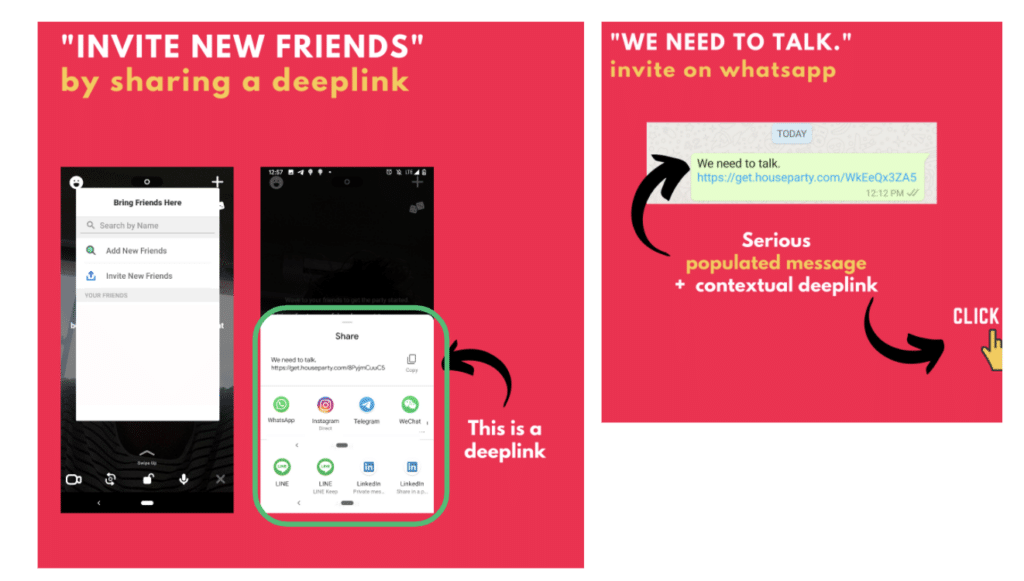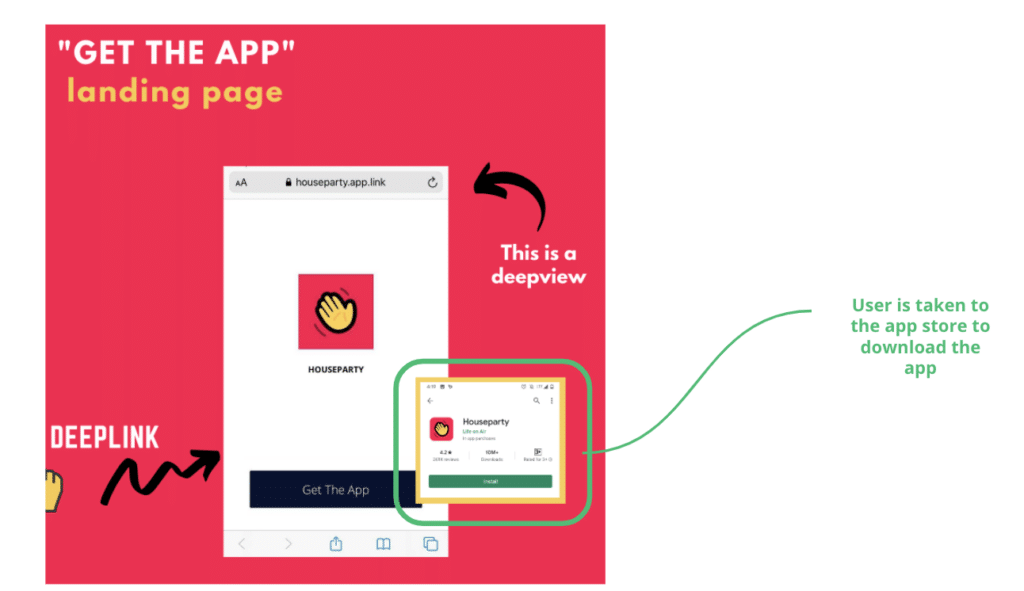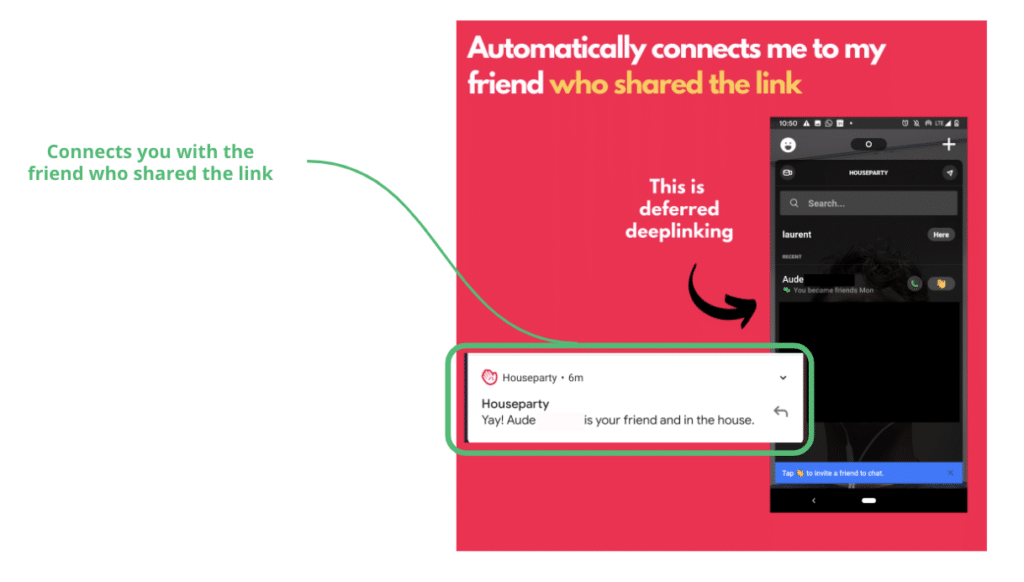After writing a post a week or so ago on simple organic strategies to drive growth in the age of COVID, I decided to do a follow up on the more advanced and creative strategies that some brands are using to drive organic growth and traffic to their app during this time of physical distancing. The overall trends we have seen are an increase in mobile app engagement in many verticals, especially those that focus on fostering human connection such as social media and video conferencing. In case you haven’t read my last post, here’s a quick recap of why when it comes to digital presence, the app wins. If you have a ton of web and app users, I don’t need to convince you that apps retain and convert users better than the mobile web. Getting a user to download your app is like going steady with them — by giving you a dedicated space on their home screen, they are entering a committed relationship — and on average, app users convert at a double rate and are twice more likely to return to your brand than a web user.
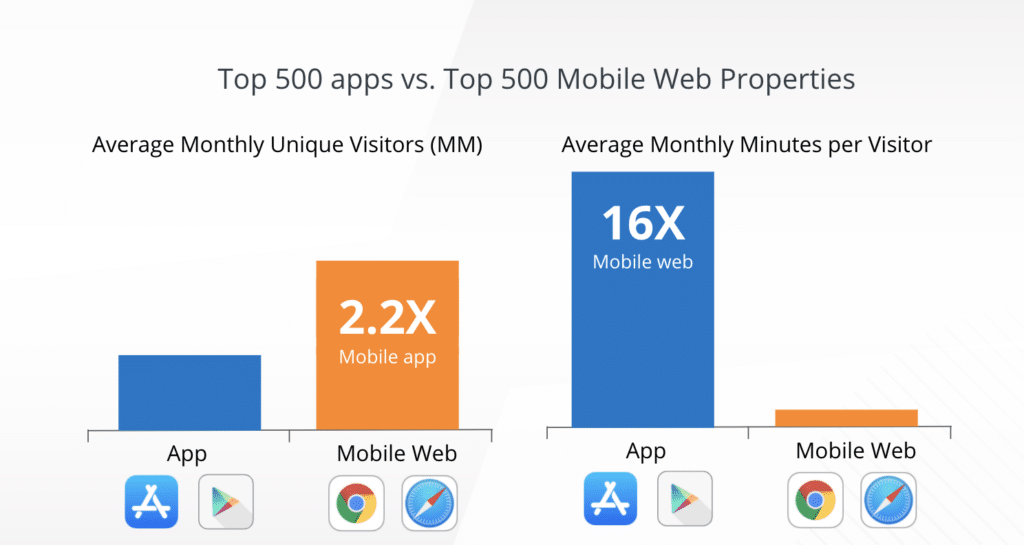
Advanced strategies for obtaining more app users
So now that I’ve convinced you that the app is better (which most of you already knew), let’s go over three advanced strategies for getting more users into the app as a follow up to the simple organic strategies we talked about last time.
1. QR Codes
One of the more advanced strategies that companies are using during this time is using QR codes to encourage users to download the app and to link to in-app content. Physical distancing has been tough to live through, but one thing is certain — it accelerated the adoption of technologies worldwide, including QR codes. I went to Peet’s the other day and used a QR code to get the app to order ahead from my local store. The best thing about using QR codes? You can track each QR code link independently to see which location or which product is driving the most engagement. Here is a video of my experience:
If you are thinking of using QR codes, here are some ideas and best practices:
- Use the QR codes in physical locations, and make sure that each location has a different code. This way you can actually differentiate between locations to see which ones drive the most app installs or in-app purchases. Get store employees to promote the app by running a competition between stores and offering a prize to the store that generates the most downloads or purchases.
- Use QR codes on your products. These can promote the app, but can also be used for tracking purposes to see which products generate more installs. You can even set up the QR code to defer deep link to the product inside the app once the app is downloaded!
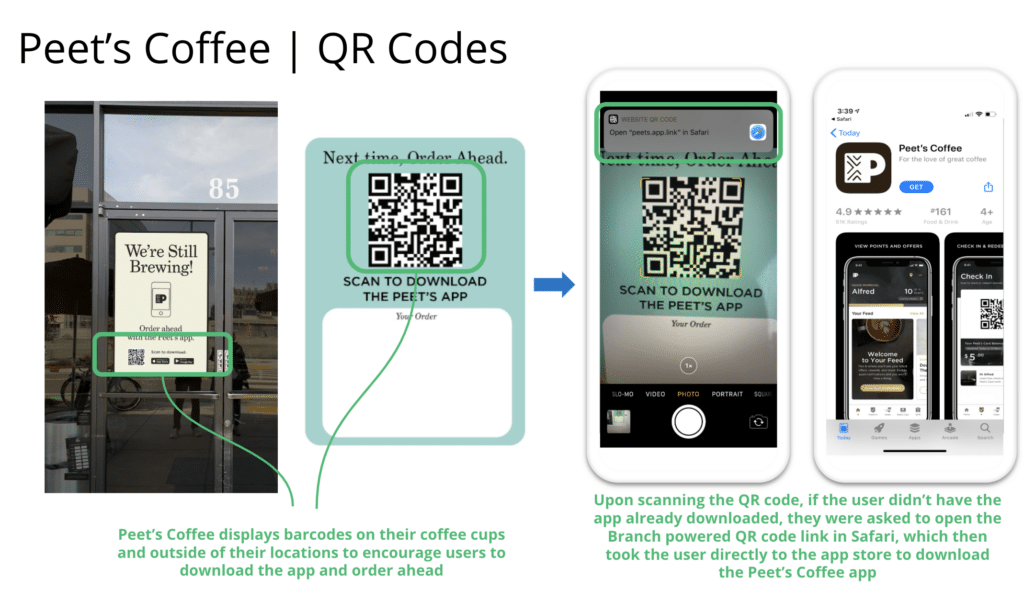
- Use QR codes on ads and tie promos to them. I always wondered why this is not more prevalent in the States — adding a QR code with a download link and in-app promotion associated with it is a great way to measure the efficiency of ads throughout a city or on billboards.
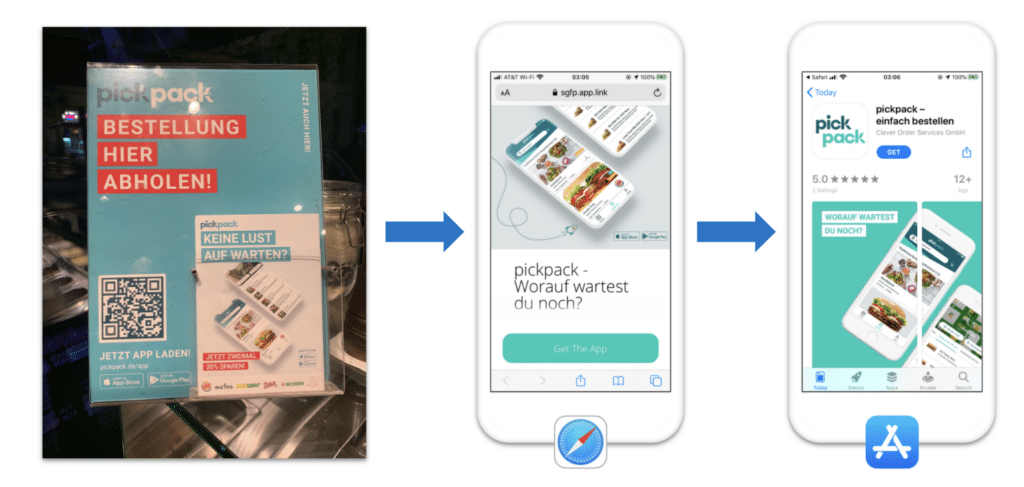
- Use a link/QR code generator that ensures that the link can be updated — the QR code can be expensive to print and you might change the content or the promotion associated with it. With a tool like Branch’s link generator, you can easily refresh the link behind a QR code when necessary.

Branch’s link generator.
2. Engage Brand Advocates
Brand advocates are the loyal champions of your brand who organically promote and spread the word about your company, product, and services. They’re a type of influencer but don’t require any monetary compensation because they advocate for your brand based on their fondness for it. Influencer marketing — including the use of brand advocates — has been a go-to method for many brands to gain exposure, but based on a recent social roundtable I moderated, physical distancing is actually getting influencer marketing to grow even more — since we can’t try things out and we can’t shop, we spend more of our time on social media and make all of our decisions on purchases based on online content. I know I have bought a miracle pan, cookbooks, exercise equipment, and seven types of dog food all based on videos on various social media platforms. Some things to think about as you explore the use of and engage your brand advocates:
- Tracking the ROI of each advocate is key. It’s important to track downloads or in-app purchases that come from different influencer links or content to understand their performance. One of our customers, rewardStyle, saw a huge lift in engagement and conversions once they used Branch links for every influencer. This allowed them to track their conversions from sharing to purchase, and tie the results back to individual influencers.

- Every user can be an advocate if you create a good incentive and tracking program. Robinhood has an amazing referral program where for every user who was invited that joined the app they got a free stock and the referrer got a free stock. What was great about their referral program is that the stock was a surprise, so it encouraged the referrer to go back into the app to see the stock they got. The user was also potentially fueled by the spike of dopamine from receiving the stock and was more likely to invite even more people to the app.
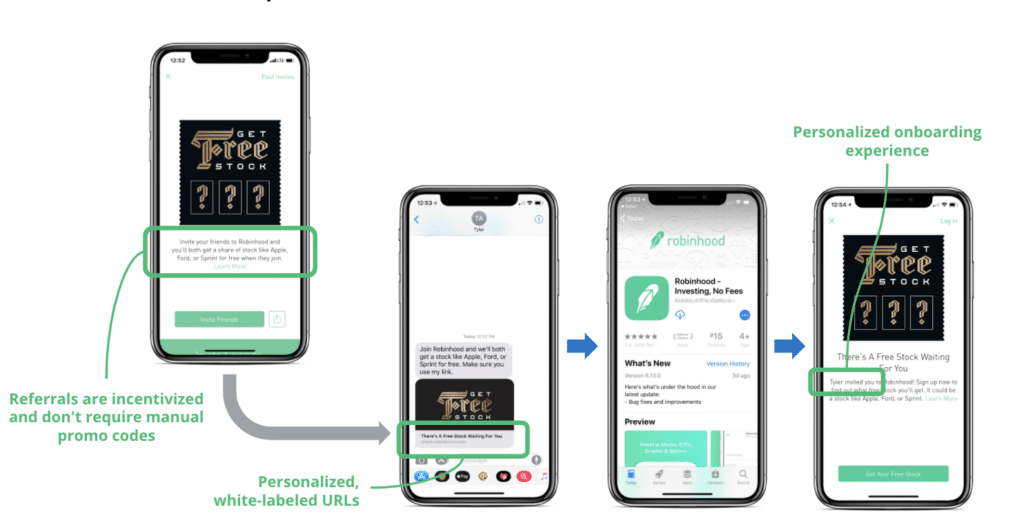
- Personalize the onboarding for people coming to your app from referrals and advocates. Making someone feel special when they come to your app improves conversion rates — in fact, Trip.com A/B tested this a while back and saw that mobile personalized onboarding almost doubles the signup rate on their welcome screen. If you know where someone came from, you can show the name of the friend who invited them after install, a special offer, or more. Houseparty has been growing a lot recently and their flow is genius — when you are added to a party, you join the party (your group of friends) right after install because the install link uses the meeting as a parameter that gets matched after install! See below:
3. Content and SEO optimization + personalized web to app banners
As I think about one channel that every single company can use to drive more growth, it’s probably SEO and intent-based marketing. So much of what we do as marketers entails creating demand, educating, and creating a need — which takes time. The magic of a user who performs a search query about a product or service is they’ve already shown interest and intent, so our job becomes a lot easier. That’s why conversions from leads that perform a search query are so much higher than conversions from display ads, or pretty much any other channels. As a test, if you compare conversions on ads shown in Google vs Facebook, the Google conversion rate is much higher, whereas Facebook achieves the same number of conversions by showing an ad to a LOT more people. Here is my advice:
- Create a streamlined process to analyze potential keywords. Our process at Branch has two steps:
- Compile a list of all the potential keywords you are targeting. Some sources can include keywords driving traffic to your site now, competitor keywords you can find using tools like Moz or SEMRush, and new keywords based on a brainstorm with your team.
- Come up with keyword rankings based on a formula that takes into consideration how relevant a keyword is to your brand, the ease of ranking for it in search results (based on the keyword difficulty rating you can get from tools like Moz or SEMRush), keyword search volume, and search intent score (based on conversion rates from cost per click bidding scores — the higher the CPC, the higher the intent).

- Come up with topics based on user intent and calculate topic scores based on the keywords in that topic and their scores
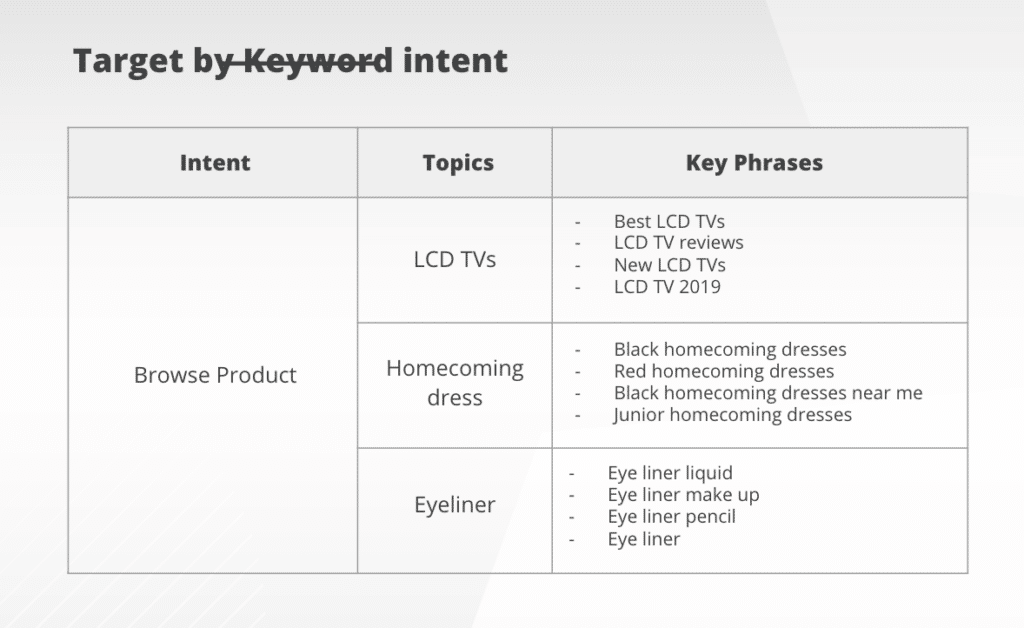
Source: Webinar with Branch and Graphitehq.com
- Follow up on user and keyword intent — make sure that once you understand intent, you use intent down the conversion funnel. Below you can see a proposed methodology on how to think about intent from SEO all the way to product and design
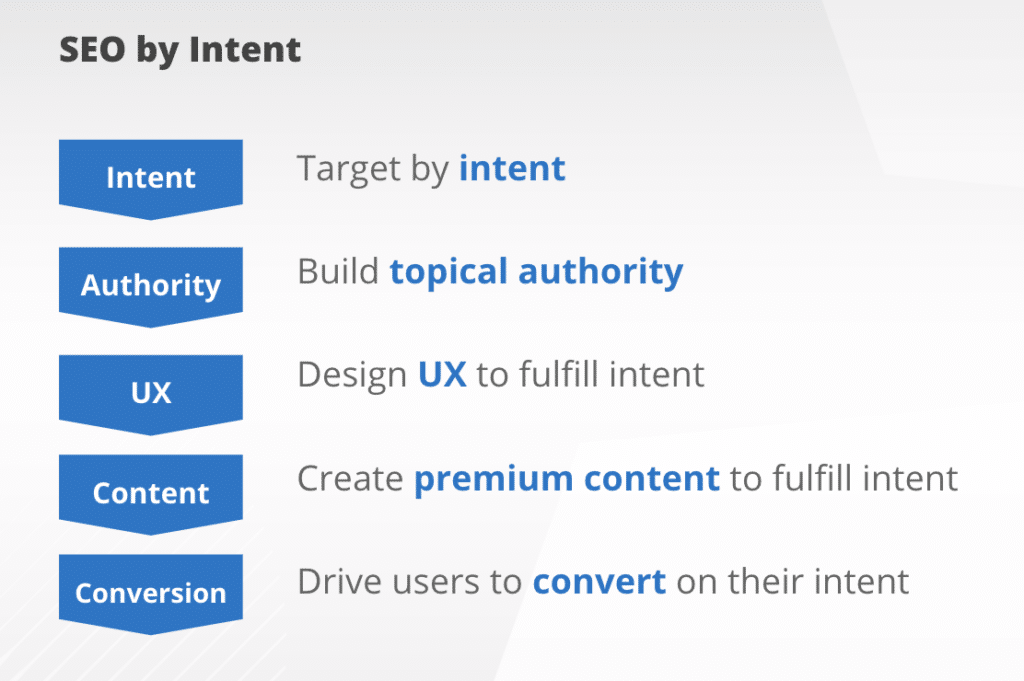
Source: Webinar with Branch and Graphitehq.com
- Convert the right user to the app, but make sure you don’t appear to be intrusive. More in my previous article on converting web users to app users.
4. Text me the app
As we looked at trends, one thing is certain: both desktop and mobile usage have increased greatly during the pandemic (though desktop activity has grown the most with spikes during the weekdays), and the balance between desktop and mobile is not equal throughout the week. I even noticed that I use my computer more to research things, shop, or consume entertainment during the week, but by the weekend I am on my phone even to do any work I might have.
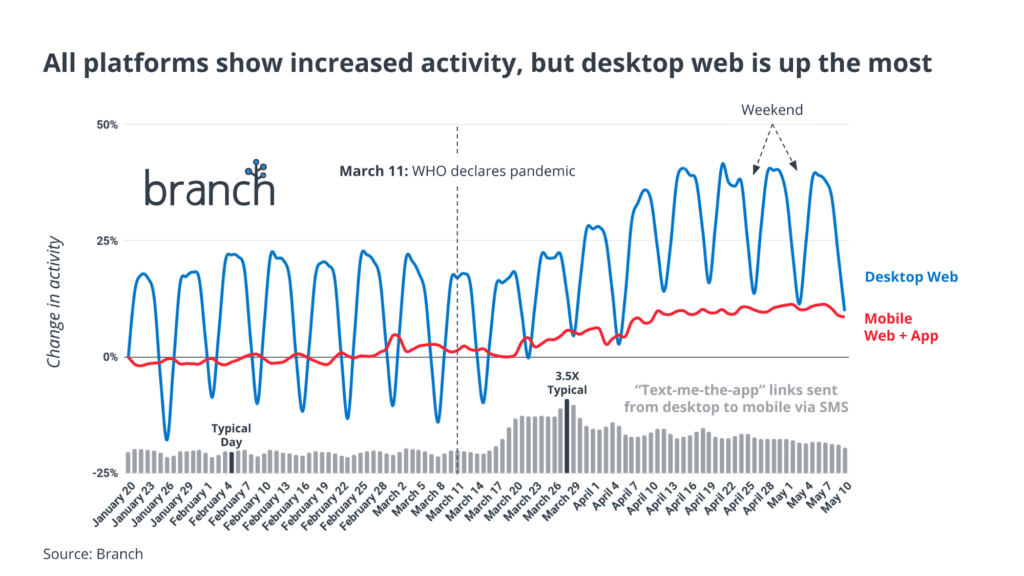
That’s why, during these times, investing in cross-platform experiences is even more important, specifically converting desktop web users to mobile app users. One way to do that is through text me the app pages or banners that allow a user to text themselves or a friend a link to the in-app content they are browsing. Here are some examples of how companies are doing it below:

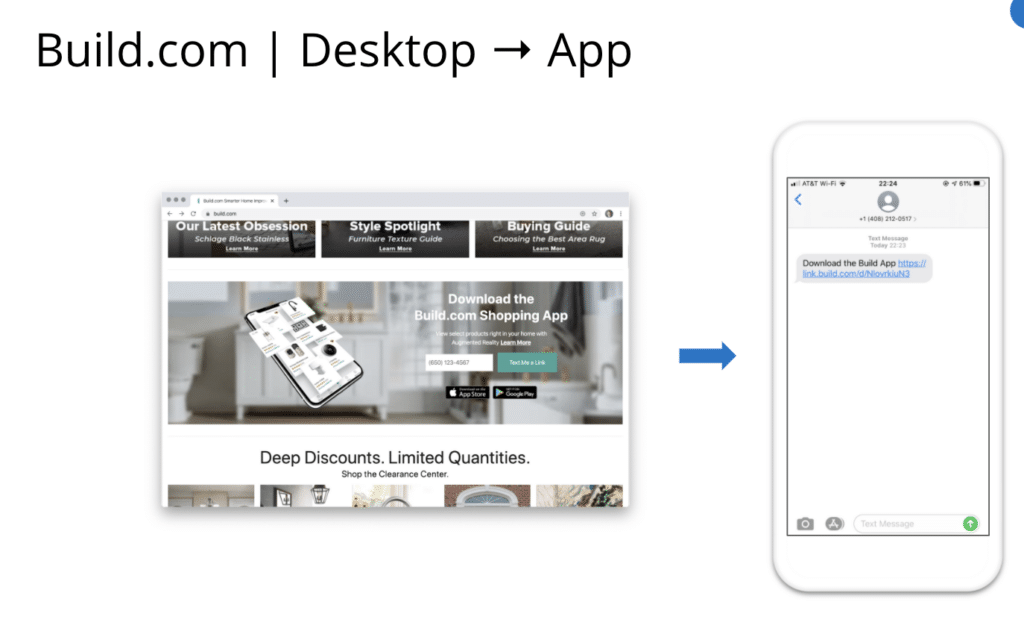
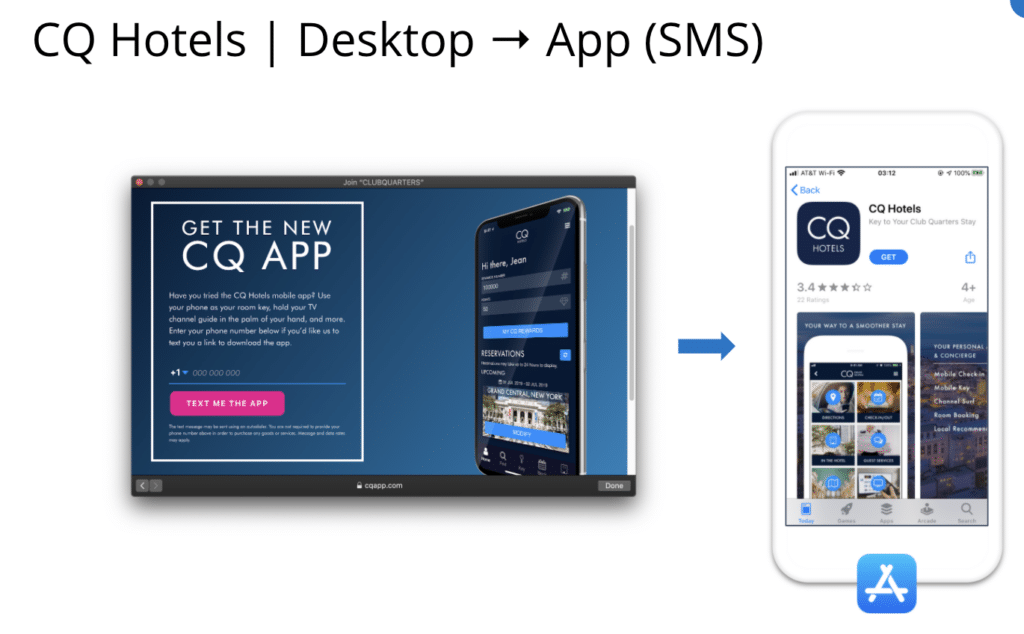
I hope that between these tips and my last article, you have eight new tactics you can use that can help boost your organic posts. In these crazy times, the adoption of digital presence — especially apps — has accelerated more in the past few months than it would have in years. This is the time to take advantage of those trends!























